International Student Huaiwen shares what it is like learning about Martin Luther King, Jr. and US civil rights
Martin Luther King, Jr.
My project is mainly focus on Martin Luther King and non-violent protesting. I’ll be researching about the contribution from Martin Luther King and his ways of protesting for civil rights, and also comparing it to today’s protests for peace. I will also interview local& international students about what they know about Martin Luther King, how they think of non-violent/violent protesting in Atlanta, and their perspective of “the best way to promote for peace” and their definition of peace.
About the Author: Huaiwen
My name is Huaiwen. I came from China, Hubei. I stayed in China for more than 15 years and I came to the US for college. I speak both Chinese and English. English is my second language, I’ve been learning English in school since I was little, but it wasn’t good until I came to the US and got my speaking skills improved. I went to Georgia State University for 2 years in Atlanta and I transferred to Georgia Tech in May 2020. Living in Atlanta for 2 years changed my life. Atlanta is diverse and I see the different cultures, customs and lifestyles. The city is modernized and beautiful, but nothing is perfect; problems such as safety on campus, poverty and gun issues still need to be concerned. And during this year in summer, after George Floyd’s death, we see a lot of protests going on in the city of Atlanta. There’re different forms of protesting: some of them are protesting on the street, and some of them are expressing their anger through burning down the buildings and looting the stores. People were protesting for “George Floyd” and “Black Lives Matter”. It reminds me of the civil rights protest movement in the 60s when the polices are trying to take down the people who are protesting, and Martin Luther King was promoting peaceful protesting in the country. The situation is similar to what we have today, that’s how it brings me into this project researching on Martin Luther King. Martin Luther King is a great person who teaches us what peace really means and how do we fight for it. So I started doing research about Martin Luther King on how he was leading and promoting non-violence. In the project, I’ll also relate King’s concept of peaceful protest to the chaos in Atlanta during summer 2020. I’ll be learning about non-violent protest. In the project, I will also interview international students who are not from the US/Atlanta, about what they know about Martin Luther King, and how they think about peace and ways of peaceful protesting.
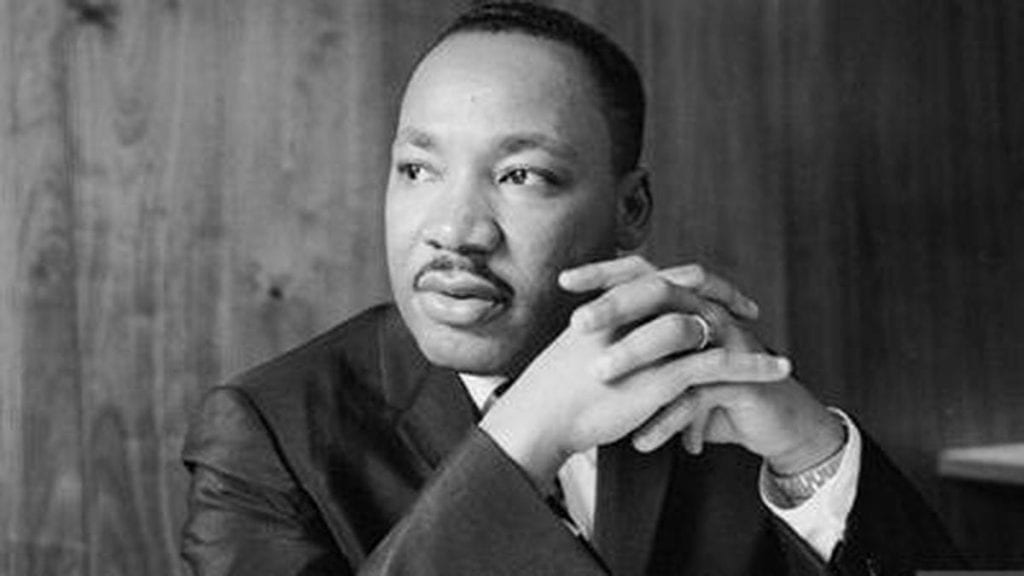
About the Speaker: Martin Luther King, Jr.
King was born in Atlanta in 1929. He was growing up experienced racial inequality and he had witnessed his father standing up against segregation. He graduated from Morehouse College with a Bachelor of Arts in sociology in 1948 with age of 19. Later he received a Bachelor of Divinity at Crozer Theological Seminary in 1951. He also received a PhD degree from Boston University. In 1955, he led the Montgomery bus boycott, and later him and other civil rights activists found the Southern Christian Leadership Conference(SCLC). In 1962, he was leading against segregation in Albany, Georgia and helped organizing non-violent protests in Birmingham, Alabama in 1963. In the same year, King helped organizing March on Washington. He delivered his most famous speech “I Have a Dream” at Lincoln Memorial. He was assassinated in Memphis, Tennessee on April 4, 1968, aged 39.
King as a Peacemaker
King is an significant civil rights leader during the American civil right movement. He is known for promoting freedom through non-violence and advocating civil rights for African Americans. In 1964, he won the Nobel Peace Price for combating racial inequality through non-violent resistance. He delivered his speech “I have a dream” helped promoting civil rights, freedom, justice and peace.
“ALWAYS FIGHT WITH LOVE.”
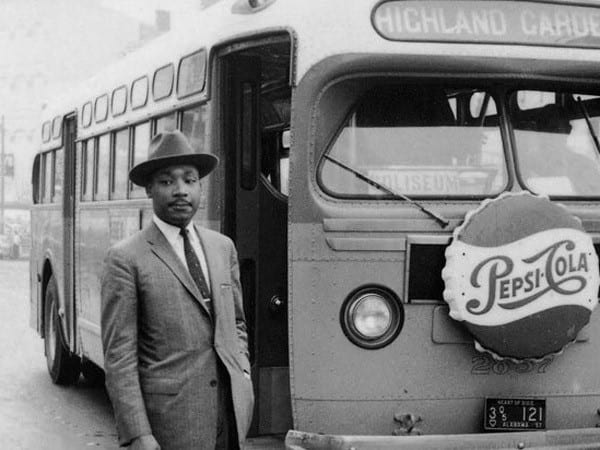
After an African American woman Rosa Park got arrested on December 1, 1955, for violating the policy of racial segregation by refusing to give up her seat to a white passenger on a bus, a bus boycott was taken place in Montgomery, Alabama. Martin Luther King was one of the leaders for the boycott. He was only 26 years old during that time. By his study of nonviolent civil disobedience, and teachings from Mahatma Gandhi, he was promoting and delivering “nonviolent protest” against racial inequality. During his speech, he stated:
“Let us fight passionately and unrelentingly for the goals of justice and peace. Let’s be sure that our hands are clean in the struggle. Let us never fight with falsehood and violence and hate and malice, but always fight with love, so that when the day comes that the walls of segregation have completely crumbled in Montgomery, that we will be able to live with people as their brothers and sisters.”
Martin Luther King, Jr.
After 381 days of the boycott, the Supreme Court stated that racial segregation in public uses are not longer constitutional. The boycott was successful. There was no violence and malice during the boycott.
Just like Martin Luther King said, “Always fight with love.” Returning violence for violence multiplies violence. Only light can fight with darkness. And only love can drive out hate.
A video of the speech
“NONVIOLENCE IS THE MOST POWERFUL WEAPON.”

The method of nonviolent protesting could be traced back to Mahatma Gandhi’s idea of nonviolent resistance leading the Independence movement. King learned from Gandhi’s idea of nonviolence. When King just started his civil right activist journey, he and his wife travelled to India to learn Gandhi’s ways and research about his work. Gandhi’s religious principle of ahimsa, which means doing no harms, was influenced by Buddhism, Hinduism and Jainism. Gandhi used non-violent method for mass action, to both racial discrimination and colonial rules in India. King was inspired by Gandhi, and he had been trying to spread the idea of non-violence during the American civil rights movement.
“I came to see for the first time that the Christian doctrine of love operating through the Gandhian method of nonviolence was one of the most potent weapons available to oppressed people in their struggle for freedom,” King wrote.
He also said during the Montgomery boycott:
“While the Montgomery boycott was going on, India’s Gandhi was the guiding light of our technique of nonviolent social change.”
King believed that it is possible to fight resist evil without resorting to violence and to oppose evil itself without opposing the people committing evil:
“The nonviolent resister not only refuses to shoot his opponent, but he also refuses to hate him.”
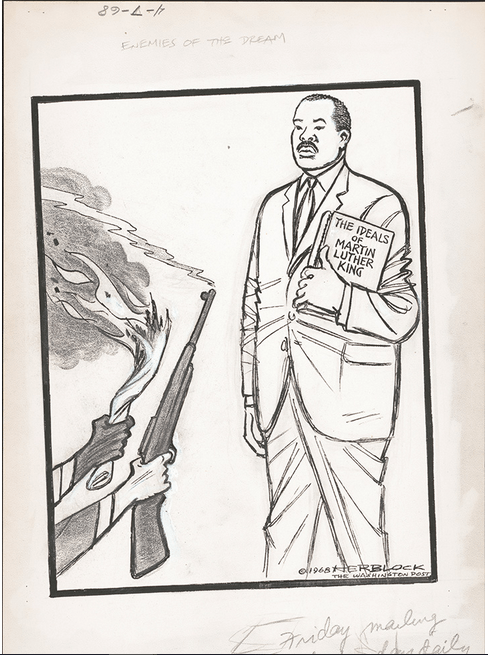
METHOD OF NONVIOLENT ACTION
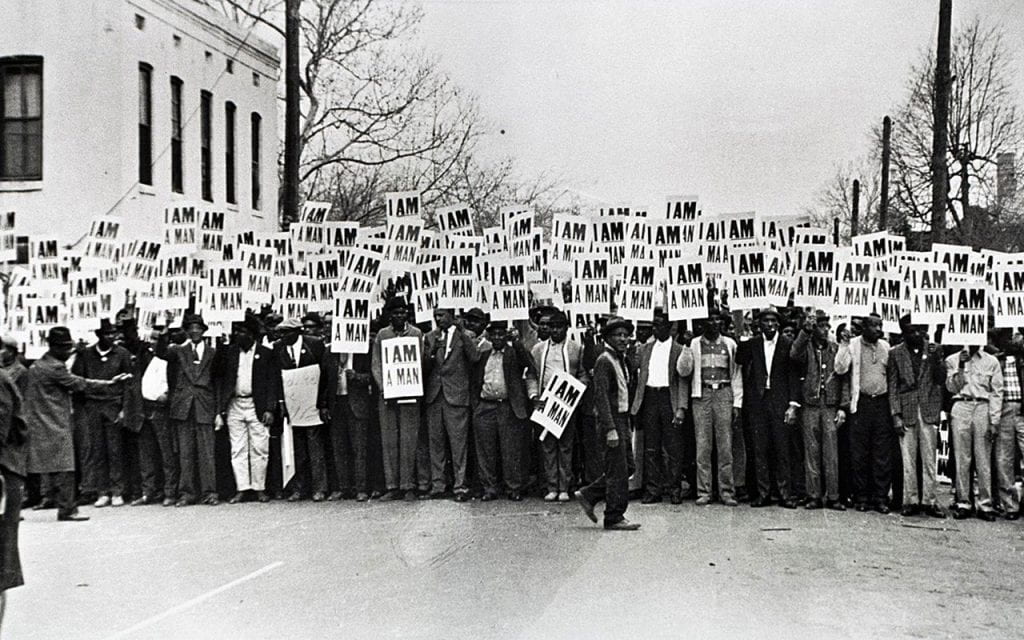
There’s a lot of different ways of non-violent protesting. Martin Luther King noted six principles of non-violence, in his first book Stride Toward Freedom:
- Nonviolence is a way of life for courageous people.
- Nonviolence seeks to win friendship and understanding.
- Nonviolence seeks to defeat injustice not people.
- Nonviolence holds that suffering can educate and transform.
- Nonviolence chooses love instead of hate.
- Nonviolence believes that the universe is on the side of justice.
What are some “nonviolent weapons” we should apply in order to fight for freedom and justice, and to gain understandings? As for formal statements, nonviolent protest can be done through public speeches, group or mass petitions; As for public acts, it could be done through marching, parades, displays of flags, slogans, wearing symbolic clothes and delivering symbolic objects; It could be done through social media and different types of arts: paints, music, videos, etc. We can also have public assemblies for protest and support, protest meetings and teach-ins… Nonviolent protest and persuasion is the most powerful way to fight for justice, to gain understandings, to show love, for our pursuing of peace.
PROTESTS IN ATLANTA 2020
GEORGE FLOYD PROTEST & BLACK LIVES MATTER PROTEST & POLICE BRUTALITY
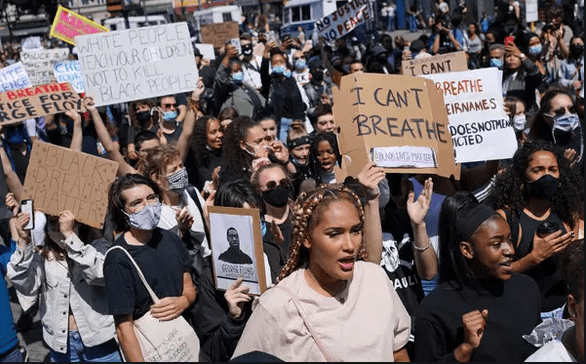
On May 25, 2020, an African American male George Floyd was murdered by a white police officer Derek Chauvin. Chauvin was holding Floyd’s back and placed his left knee on Floyd’s neck while arresting Floyd. Floyd was asking Chauvin “Please” and “I can’t breathe” multiple times, the police kept his knee on him, and later Floyd started to have a nosebleed. Chauvin did not remove his knee until an ambulance arrived. Floyd eventually passed away; the emergency medical services was not able to save him. Floyd’s death triggered a mass nationwide protesting for “Black Lives Matter” and against to police brutality.
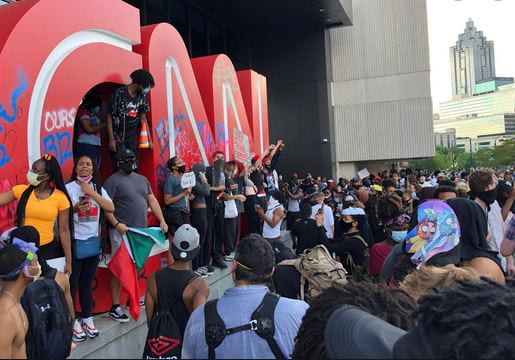
“In Atlanta, demonstrators set a police car ablaze and broke windows at CNN’s headquarters. Protesters also struck officers with bottles and broke into a restaurant in downtown Atlanta. The demonstration started peacefully but quickly changed tone Friday evening. Protesters used barricades to break police vehicle windshields and jumped from car to car. Hundreds of the protesters confronted police outside CNN headquarters. They spray-painted the large, iconic CNN logo outside the building, breaking a windowed entrance.” Stated from Associated Press.
Despite there is still peaceful protest going on, but for those who were burning down the city, who were looting restaurants and other stores to express their anger, they were hurting the business and especially small black business in the city. As the George Floyd and BLM protest were growing in Atlanta, the NBC also reported a news about Atlanta police using excessive force to arrest 2 college students. Violence only caused more and more violence. Thinking back of Martin Luther King’s approach to nonviolence, the only way to stop violence is through peaceful ways. Violence can fight with violence, but only peace can stop violence. Hate can never stop hate, but only the power of love does.
INTERVIEW
For further understanding of people’s perspectives about peace and nonviolence, I interviewed some international college students and students from Atlanta. Let’s see what are their thoughts about Martin Luther King, King’s idea of non-violence, and their thoughts about current Atlanta’s situation associated with civil rights protest.